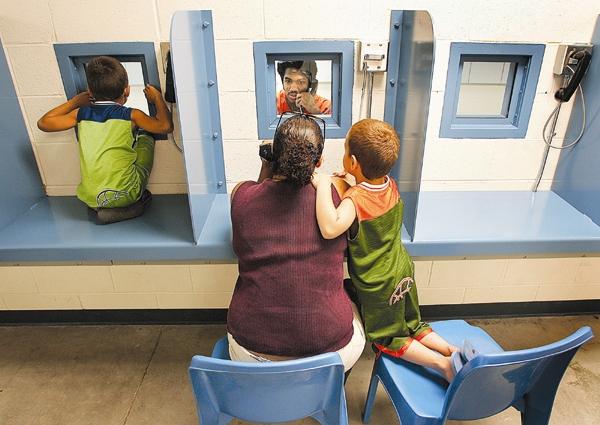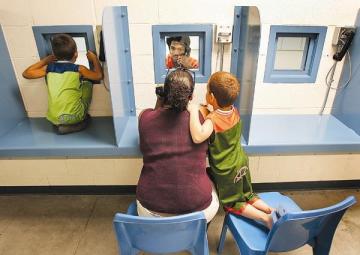
Jail Video Visitation Falls Short on Usage, Revenue Expectations

Gone are the days of being able to look into a loved one’s eyes during a visit at the Bastrop County Jail. Instead, a “visit” today includes connection lag, static and glitches. That’s because in November 2014 the Bastrop sheriff made the decision to replace in-person visitation with a Skype-like video system marketed as a money-saving safety improvement.
But public records obtained by the Observer show that remote video visitation is used only a few dozen times each month, and the county has only earned a few thousand dollars, all of which has gone into paying for a system that critics say is expensive and fraught with technical difficulties.
To “see” someone at the Bastrop County Jail, visitors must either go to the jail and use the video system for free, or log in remotely for $1 per minute. The county receives 20 percent of the revenue; the remainder goes to Securus, the private company that handles inmate phone calls, emails and video visitations.
Bernadette Rabuy, an analyst at the nonprofit Prison Policy Initiative, says the Bastrop jail is among hundreds around the nation that have failed to meet revenue expectations from video visitation systems.
“Video visitation isn’t bringing in anywhere near the amount of money it was supposed to,” Rabuy wrote in an email. “This is likely because of the low demand for these services, which is most likely the result of the high price charged for remote video visits.”
From November 2014 to September 2015, inmates at the Bastrop County Jail made video calls 49 times per month on average, according to public records. They made 2,444 telephone calls per month on average during the same period.
Charles Littleton, chief deputy at the Bastrop County Sheriff’s Office, told the Observer that his anecdotal experience tracks with the Observer’s numbers. Incarcerated people, he said, do not use the remote video visitation system as often as the phone system, which is cheaper. The phone system is also more convenient than the free on-site video visitation, as incarcerated people and their families can use the phone system as much as they want.
“Whether it’s [on-site] video visitation or face-to-face, we limit the people to two 20-minute visits a week,” Littleton said. “So [phone use] fills the gap, whichever way that is, because they can call their girlfriends or boyfriends all day long or after they get off work.”
Bastrop County Jail has 36 video visitation units. Securus paid for the first 26 units, but the sheriff’s office later asked for 10 more, promising to repay the company. Bastrop is using its portion of the proceeds from the remote video calls to pay back Securus for the machines — about $23,000 in all. Bastrop has so far been able to pay off about one unit per year, which means the jail will see no video visitation revenue until 2025.
In contrast, the jail earned nearly $84,000 from phone calls during that same period of time.
It’s not just the high cost of remote video visitation that keeps families and incarcerated people from using the system. The calls themselves are often riddled with technical difficulties, according to Kymberlie Quong Charles, a criminal justice program coordinator at Grassroots Leadership, an Austin group that fights for-profit incarceration. Factor in the costs of remote video visitation, and incarcerated people and their families are reluctant to use the system.
According to Littleton, Bastrop did not intend to make money from video commissions. He said the jail sought to minimize inmate movement and cut down on manpower needed for in-person visitation, which Littleton says they’ve accomplished.
Advocates say that eliminating in-person visitation can have a detrimental psychological impact on inmates. According to Quong Charles, in-person visitation is essential for rehabilitation.
“It seems like the industry has operated on this assumption that everybody’s communicating through video chat these days, and of course people are going to want to do that for visits,” Charles said. “To them, it’s a business, it’s an opportunity, it’s a cash cow. They don’t see it as a vital part of providing emotional support and critical connections.”


